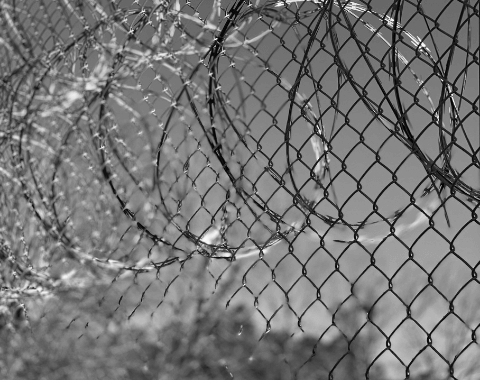Men coming home from prison face a unique set of challenges. Many of those barriers – clothes, food, bus passes – can be addressed by reentry programs that focus on emergency needs. Other barriers are more complex, like navigating the DMV to get a driver’s license or finding a new job but are visible and well-documented.
However, some of the most complicated reentry issues are less often discussed. Many are emotionally fraught and none are easy to solve. Any one of these six hidden barriers can cause someone to say “F*** it” and return to street life.
Family Dynamics
Time stands still in prison but life outside keeps moving. Children are born, grow, and leave the house. Other family members die. Communication between those in prison and those outside is restricted to short phone calls or heavily supervised face-to-face visits. Privacy is non-existent. The ties that bind wear down over the years.
A person leaving prison is always excited to be home, but walking into a family gathering can feel like stepping onto a minefield. There are so many complicated emotions to navigate, and, as one Turn90 graduate recently said, “just because your kid calls you daddy doesn’t mean anyone is going to trust you with him.”
The fraught interactions between the newly-released and their families are challenging even in the best of situations. But for a person who’s facing a mountain of problems all at once, problems in the home can be a one-way ticket back to the streets, which will always welcome you with open arms, no questions asked.
Your Credit History Might Not Be Your Own
They don’t call incarceration a “civil death” for no reason. Your life doesn’t get put on pause while you’re in prison. The world actually goes on without you, as if you’re dead.
This means, when you return, chances are your bank accounts and credit history are non-existent at best. At worst, your identity may have been stolen. One Turn90 graduate came home to find he owed thousands of dollars on a loan he had not taken out (How could he? He was in prison!), which was in default. His credit rating was abysmal, an insurmountable barrier to buying the car he needed to get safely to and from his new job.
Without help navigating the complex world of personal finance, that individual may have found his way back to the streets to earn money. After all, buying a car in cash doesn’t require a credit check, does it?
Forget About Renting Your Own Apartment
Most reputable apartment complexes ask about felony records on their applications. They do background checks. A criminal charge considered violent results in immediate disqualification from renting an apartment.
It doesn’t matter how old the charges are. It doesn’t matter how much time you served. There’s no checkbox that says, “I’ve served my time faithfully and am working hard to redeem myself.” There’s not even a mitigating strategy that allows for letters of support from family, friends, employers, or mentors. There is only a past life that never seems to go away and will always take a person back.
You Might Have to Pay For Your Own “Community Supervision”
There’s a common belief that all prisoners’ needs are paid for by the criminal justice system, but the truth couldn’t be more different. Incarcerated people and their families pay for all court fees and fines. They pay for any items beyond basic hygiene and food items provided by the prison (think: snacks, extra soap, and toothpaste). They pay for email “stamps” and minutes on the phone.
Upon release, an incarcerated person might be billed monthly for their time on probation or with parole officers. If they have to wear a surveillance band, they probably have to pay for it. They have to pay for court-mandated therapy, anger management classes, or drug treatment. Many halfway houses charge a nominal rent; transitional housing usually charges more.
Those hidden bills add up fast. And where can a man always earn a living? The streets.
What Do You Mean By “SmartPhone?”
A recent Turn90 graduate was incarcerated for nearly forty years. When he went in, the 1980s were in full swing. Computers were, at best, good for playing Oregon Trail, and telephones were still attached to walls. To apply for a job you went into a business and filled out a paper application.
Technology changes so much, so fast, that returning home from prison can feel more like embarking on a journey to a new planet. From smartphones to online job applications, navigating the technological advances can be daunting, and can keep the most well-intentioned person from finding gainful employment.
Without help, frustrations can build quickly and lead a person right back to earning a paycheck the only way he knows how.
Free Health Care Isn’t Really Free
Copays. Deductibles. Even those of us with experience in managing the healthcare system can easily feel overwhelmed by the cost of “free” healthcare services. Add to that the fact that most people in prison receive only the most basic of healthcare, requiring numerous appointments following release just to ensure baseline good health. The cost of these checkups quickly adds up, even for those on government-subsidized healthcare plans.
A recent Turn90 participant with a seizure disorder hadn’t seen a neurologist for several years before his release. Appointments were postponed due to scheduling or staffing issues. Shortly after his release, he had his first seizure in years which impacted his ability to drive for at least a year. Hospital bills quickly added up.
Suddenly, the streets felt like a safety net, and he was certainly falling.
A Deeper Investment is Needed
Truly stepping up to help people successfully transition from prison requires a deeper investment than the current status quo. A person goes to prison with problems and they come out with more. Prison reentry organizations must go beyond the provision of emergency services to address the more complex challenges faced by individuals transitioning home.
Turn90 isn’t an out-of-the-box solution for all formerly incarcerated people and it’s not the only solution. But it is one example of what’s possible if we really want to do more to help people succeed after prison. Interested in the Turn90 program model?
Visit us at www.TurnNinety.com or contact Leah@TurnNinety for more information.


